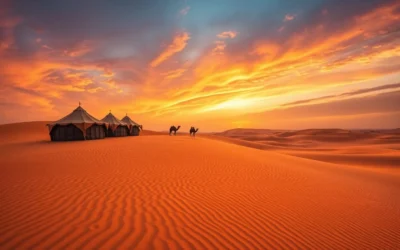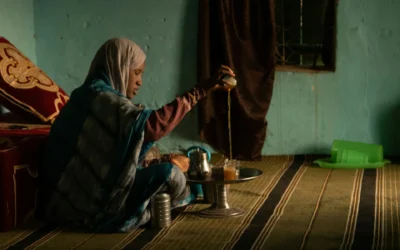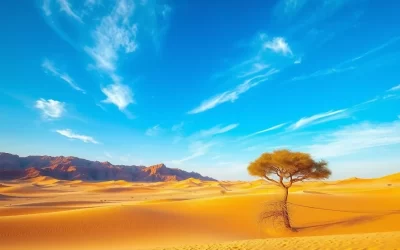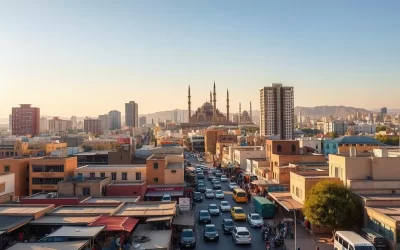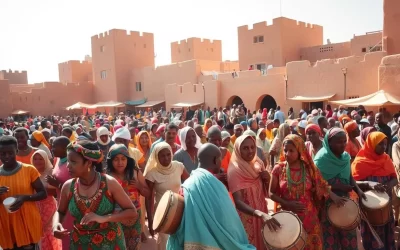✓ Accommodations✓ Flights✓ Rental Cars✓ Tours & Activities ✓ Tours & Activities
Mauritania is a country with a rich linguistic tapestry. Modern Standard Arabic stands as the official language, used in government and formal settings. However, the majority of the population speaks Hassaniya Arabic, a local dialect that reflects the region’s cultural heritage.
Beyond Arabic, the country recognizes Pulaar, Soninke, and Wolof as national languages. These languages are integral to the daily lives of many communities. French also plays a significant role, especially in education and media.
This linguistic diversity makes Mauritania a fascinating region to explore. Each language tells a story of history, culture, and identity. Understanding these spoken varieties offers a deeper appreciation of the country‘s unique character.
Overview of Mauritania’s Linguistic Diversity
From ancient Berber roots to modern-day influences, the languages here tell a rich story. The country’s linguistic landscape has been shaped by centuries of cultural exchange, migration, and colonization. Understanding this evolution helps you appreciate the depth of its cultural heritage.
Historical Context and Language Evolution
The roots of this region’s languages trace back to ancient Berber kingdoms. Over time, Arab migrations introduced Arabic, which became a dominant force. French colonial rule later added another layer to the linguistic mix, especially in education and administration.
Today, the population reflects this blend, with 40% identifying as Haratin, 30% as Afro-Arabs, and 30% as Fula and other groups. This diversity is mirrored in the languages spoken, from Arabic to Pulaar, Soninke, and Wolof.
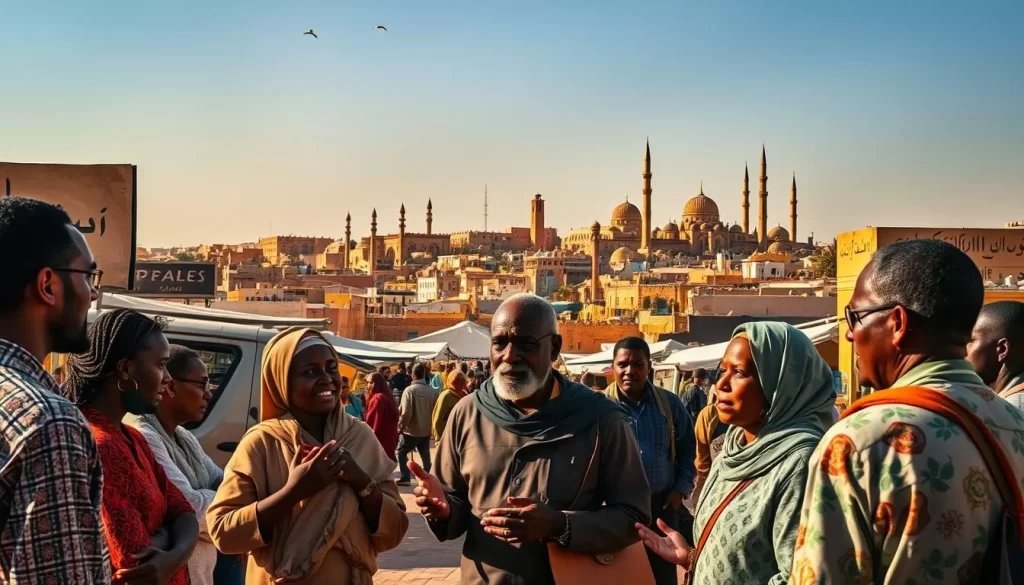
Regional Language Variations and Demographics
Different areas within the country have developed unique linguistic traits. For example, Hassaniya Arabic is prevalent in the north, while Pulaar and Soninke dominate in the south. These variations reflect the demographic distribution of ethnic groups.
The government recognizes these languages as national treasures, promoting their use in education and media. This policy helps preserve the cultural identity of each group while fostering unity.
| Language | Region | Percentage of Speakers |
|---|---|---|
| Hassaniya Arabic | North | 70% |
| Pulaar | South | 20% |
| Soninke | South | 10% |
This linguistic diversity is not just a reflection of history but also a living part of daily life. It shapes how people communicate, learn, and connect with their heritage.
The Role of Arabic in Mauritania
Arabic plays a central role in shaping the identity of this North African nation. It serves as a bridge between diverse communities, uniting them under a shared linguistic heritage. Two forms of Arabic dominate daily life: Modern Standard Arabic and Hassaniya Arabic.

Modern Standard Arabic as the Official Language
Modern Standard Arabic (MSA) is the formal language used in government, education, and media. It appears in official documents, legal texts, and news broadcasts. This standardized form ensures clear communication across the region and beyond.
MSA is taught in schools, making it accessible to the majority of the population. Its use in formal settings highlights its importance in maintaining national unity and administrative efficiency.
Hassaniya Arabic: The Lingua Franca
Hassaniya Arabic, a dialect rooted in Bedouin traditions, is the everyday language for most people. It reflects the cultural heritage of the region and is spoken across various communities. This dialect fosters a sense of belonging and facilitates daily interactions.
From marketplaces to family gatherings, Hassaniya Arabic is the primary mode of communication. Its widespread use underscores its role as a unifying force in this diverse society.
Mauritania: Official and Widely Spoken Languages
The linguistic landscape of this North African nation is shaped by its constitution and cultural diversity. Arabic, designated as the official language, plays a central role in governance and formal communication. Alongside Arabic, national languages like Pulaar, Soninke, and Wolof are recognized, reflecting the country’s rich heritage.
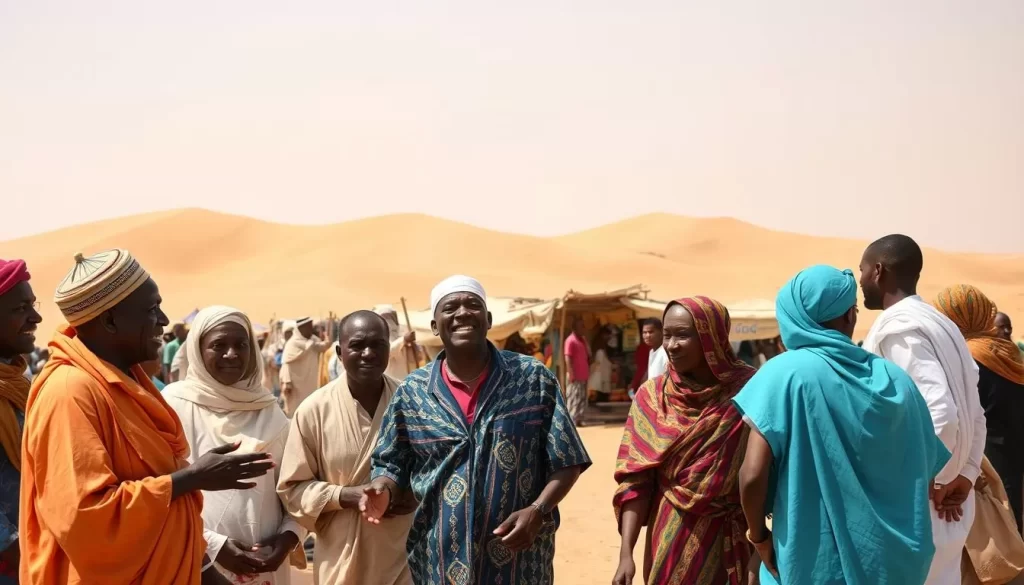
National Languages and Their Status
Pulaar, Soninke, and Wolof are integral to the daily lives of many communities. These languages are not just tools for communication but also symbols of cultural identity. The government acknowledges their importance by promoting their use in education and media.
For instance, Pulaar is widely spoken in the southern regions, while Soninke and Wolof are prevalent in specific communities. This regional variation highlights the demographic diversity of the population.
Government Policies and Educational Impact
The government has implemented policies to ensure linguistic diversity is celebrated and preserved. In schools, students learn Modern Standard Arabic alongside national languages. This approach fosters unity while respecting cultural differences.
Media outlets also play a crucial role in promoting multilingualism. Television and radio programs often feature content in Arabic, Pulaar, Soninke, and Wolof. This inclusivity helps bridge gaps between different groups.
| Language | Role | Usage |
|---|---|---|
| Modern Standard Arabic | Official Language | Government, Education |
| Pulaar | National Language | Southern Regions |
| Soninke | National Language | Specific Communities |
| Wolof | National Language | Specific Communities |
These policies ensure that linguistic diversity remains a cornerstone of the nation’s identity. By embracing multiple languages, the region fosters a sense of belonging and unity among its people.
The Influence of French and Niger-Congo Languages
The linguistic blend in this North African region reflects a unique cultural fusion. French, though not the official language, remains a key player in administration, business, and media. It’s widely used in governmental operations and educational materials, making it a vital tool for formal communication.
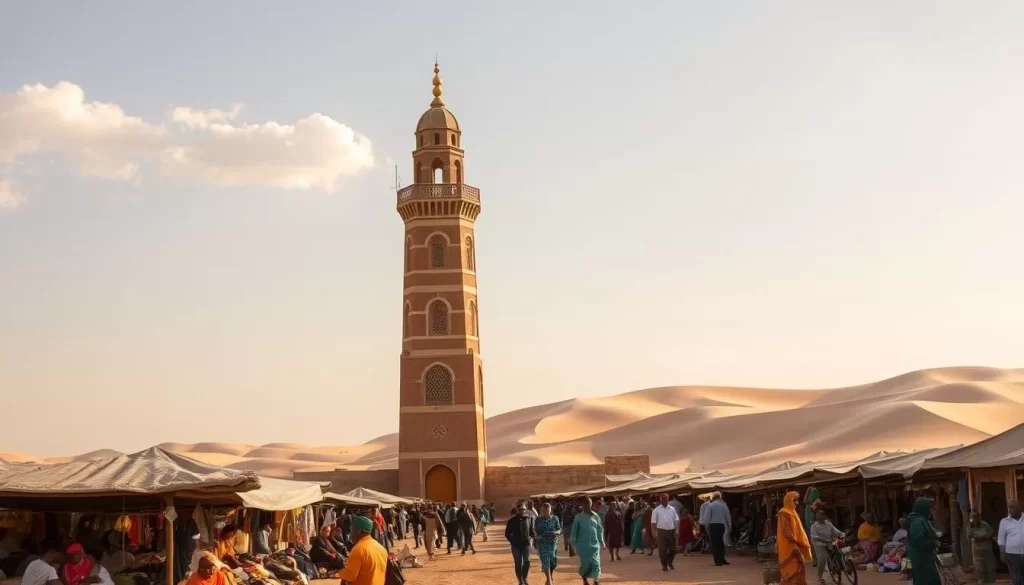
French as a Working and Media Language
French has a strong presence in the country’s formal sectors. It’s the preferred language for legal documents, business contracts, and media broadcasts. This influence stems from colonial history, where French was introduced as a tool for administration and education.
Despite its formal role, French coexists with local dialects in daily life. This duality highlights the region’s ability to balance tradition with modernity. For example, television programs often feature both French and indigenous languages, catering to diverse audiences.
Significance of Pulaar, Soninke, and Wolof
Niger-Congo languages like Pulaar, Soninke, and Wolof are central to the social fabric. These national languages are more than just tools for communication—they’re symbols of cultural identity. Each language is tied to specific communities, reflecting their history and traditions.
Pulaar, for instance, is dominant in the southern area, while Soninke and Wolof are prevalent in other regions. This diversity enriches the country’s cultural landscape, fostering a sense of belonging among different groups.
Understanding these languages offers a deeper appreciation of the region’s heritage. They’re not just spoken—they’re lived, shaping everything from family gatherings to community events. For more on the linguistic diversity of Africa, explore this detailed resource.
Cultural Reflections and Communication in Mauritania
Language in this North African nation is more than just a tool for communication—it’s a reflection of cultural identity. From media broadcasts to daily conversations, the way people speak shapes their connection to heritage and community. This section explores how language influences social cohesion and educational practices, offering a deeper understanding of its role in society.
Language Use in Media and Daily Life
Television and radio play a significant role in shaping public opinion. Programs often feature multiple languages, catering to the diverse population. For example, Wolof is widely used in media, reflecting its cultural significance. This multilingual approach helps bridge gaps between different groups, fostering unity.
In daily life, language choices reflect regional identities. Hassaniya Arabic dominates in the north, while Pulaar and Soninke are prevalent in the south. These variations highlight the demographic distribution of ethnic communities. Understanding these differences offers insight into the country’s rich cultural tapestry.
The Impact on Social and Educational Sectors
Language also plays a crucial role in education. Schools teach Modern Standard Arabic alongside national languages, promoting multilingualism. This approach ensures students stay connected to their heritage while gaining access to broader opportunities.
Government initiatives have further strengthened this effort. Policies aim to preserve linguistic diversity, ensuring national languages are celebrated in formal settings. For more on these educational reforms, explore this detailed resource.
By embracing multiple languages, the region fosters a sense of belonging among its people. This inclusivity not only preserves cultural identity but also enhances social cohesion.
Conclusion
The linguistic identity of this North African region is a testament to its rich cultural heritage. Arabic, particularly Modern Standard Arabic, serves as the backbone of formal communication, while local dialects like Hassaniya Arabic reflect everyday life. French also plays a significant role, especially in education and media, bridging tradition and modernity.
National languages such as Pulaar, Soninke, and Wolof are deeply rooted in the population‘s daily interactions. These languages are not just tools for communication but symbols of cultural pride. Understanding this linguistic diversity offers a deeper appreciation of the country‘s unique character.
Looking ahead, the preservation of these languages will continue to shape the region‘s identity. For more insights into the cultural dynamics, explore this detailed resource. By embracing its linguistic heritage, the country fosters unity while celebrating its diversity.
The above is subject to change.
Check back often to TRAVEL.COM for the latest travel tips and deals.

